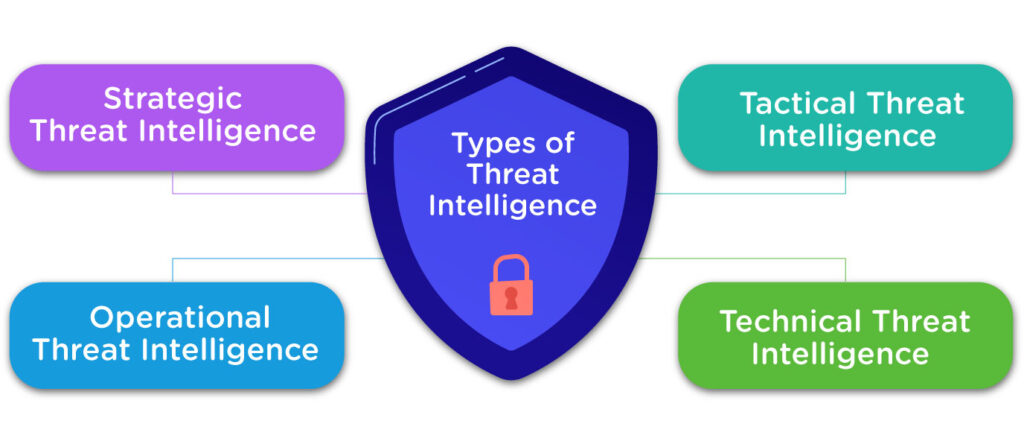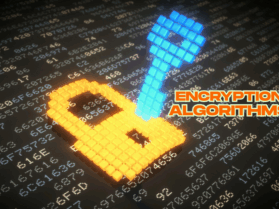We live in a world where our personal information is digitally available, raising the concern of attracting the attention of cyber criminals. Where data is a treasure to every individual, it can be a target for those with malicious intent. Safeguarding data is a foremost concern for both people and businesses today; that is where threat intelligence or intel comes into the picture.
As stated by sources, cyber-attacks occur every 39 seconds, marking a whopping average of more than 2,200 attacks every day. In 2024, the USA alone encountered an average financial loss of $9.4 million. Such figures indicate the alarming need for a solid security framework. Failure to undertake appropriate precautions and mitigatory steps has been a significant factor contributing to the remarkable rise in cyber threats.
This blog shall explore threat or risk intelligence and determine how it can be an impactful strategy to uphold a strong cybersecurity architecture. Let's get started by thoroughly understanding threat intel.
What is Threat Intelligence?
Threat intelligence or intel is a methodology that enables businesses to make data-driven and strong cybersecurity decisions. The tactic integrates in-depth data analysis and various additional tools to identify possible threats, allowing firms to take appropriate measures to mitigate such risks.
In simple words, threat intel is the process of assessing actionable data to trace and proactively prevent risks related to cybersecurity. Businesses often integrate this strategy to stay threat-ready and encounter occasions of data breaches. According to sources, over 75% of organizations around the globe have adopted this approach to solidify their security practices. For the purpose of offering high-quality security assistance, threat intel depends on valuable data extracted from various reliable sources.
Knowing the Key Classifications of Threat Intel-

Strategic Intelligence:
Strategic threat intelligence denotes the assessment of a company's cyber threat environment following a decision. It uses a non-technical outline that can be understood by the non-IT workforce, including CEOs, directors, and other decision makers. This particular approach looks after the strategic assets of a company that is vulnerable to cyber threats, providing preventive measures.
Operational Intelligence:
Operational intelligence focuses on future threats that can take place against a company. In brief, it provides insights on threats, addressing the concerns of who, how, when, where, and with what impact. Operational intel offers technical insights on cyber risks that can be very crucial for IT professionals. Here, the data analyzed is directly extracted from attackers, analyzing their tactics, techniques, and procedures (TTPs).
Tactical Intelligence:
Tactical intelligence offers more tech-specified details about emerging threats that are crucially important for security teams and, hence, are utilized by security operations centers (SOC). By identifying several cyber threat approaches, tactical intelligence assists firms in better security control decision-making and implementing appropriate mitigatory strategies.
Technical Intelligence:
It is an evidence-based technique of cyber risk intelligence that assesses actual cases of attacks, and based on the data extracted, the method examines the indicators of compromise (IOCs). This classification offers technical support while addressing any vulnerability that can be a reason for security breach.
What Does Threat Intelligence Exactly Do?
Threat intelligence in cybersecurity aims to assist organizations in formulating a solid security framework. Cyberattacks have doubtlessly taken a toll on companies of all sizes across the globe lately. A key cause for enhanced cyber threats is certainly the failure to identify weaknesses. In this regard, threat intel offers a holistic view of the threat environment, analyzing actual cases of security breaches.
It is a common technique that IT departments employ to stay informed about emerging threats and take actionable decisions during crisis times. Risk intelligence can be advantageous in transforming the entire security architectures of enterprises, boosting cloud and network security. Furthermore, the methodology backs up IT and security teams with the most applicable resolutions to safeguard data.
Outlining the Lifecycle of Threat Intelligence:
The threat intelligence lifecycle signifies the stages that collectively contribute to achieving the goal of creating a strong security framework. There are six stages that continuously function. These phases also indicate how threat intel works while offering vigorous measures to fix security weaknesses.
Stage 1: Planning
The primary step toward initiating threat intel is to set goals, plan the entire process, and determine the requirements. The goals typically reflect what an organization seeks while establishing a security framework. It is basically a blueprint that denotes what type of attack can take place against an organization and with what impact. Additionally, it highlights what is required to address such risks.
Stage 2: Data collection
According to the plan, the threat intelligence team collects raw data from multiple sources. The data is an outcome of actual attacks that occurred due to certain security vulnerabilities. For example, if the IT team of a company considers malware a potential threat, they gather data from sources that have actually encountered such risks. Alongside that, analysts also evaluate data quality to find out whether to depend on it or not.
Stage 3: Processing
The gathered information is accordingly processed and segregated into various datasets that consist of metadata for better accessibility. The motive is to make important information easily attainable during the time of an emergency.
The data is arranged in a way that allows automated functionalities to trace valuable information conveniently.
Stage 4: Assessment
Analysis and assessment involve testing as well as evaluation of the entire process. Here, analysts test the datasets with actual prompts concerning a threat situation while finding the resolution to address it effectively. Based on this objective, organizations identify specific security vulnerabilities and risks, while tracing solutions in the datasets.
Stage 5: Dissemination
At this stage, intelligence teams pass or disseminate required information to the stakeholders in a way that is understandable and easy to implement while addressing a situation. The recommendations involve less complicated terms and resolutions, considering the technical knowledge level of the receiver.
Stage 6: Reporting and Feedback
The final phase includes the stakeholders' reporting and feedback for the resolution recommended by the intelligence team. Here, analysts evaluate whether the recommendation was effective and met the requirements of the stakeholders effectively.
Determining the Importance of Risk Intelligence:
The technological era has indeed boosted security concerns for people as well as organizations worldwide. Therefore, while intending to stay secure contemporarily, it is necessary to look for unbreakable security support. In this context, threat intelligence offers an extensive approach to not only identify cyber risks but also recommend the most appropriate methods to mitigate them.
Alongside technology, cyber attackers are also advancing. They are utilizing cutting-edge technologies to trace vulnerabilities and carry out attacks. Concerning this, threat intel follows a continuous process and real-time monitoring to evaluate not only prevailing but also emerging risks in the cyber realm. Hence, this approach can be an impactful barrier between valuable data and cyber criminals, which companies have been aiming to integrate for decades.
Threat intel can be highly advantageous for anyone searching for robust security tactics. Apart from that, IT analysts, SOC, intel analysts, security team, CSIRT, and the entire management of a company can use this method for security benefits.
Key Tools and Tactics for Robust Risk Intelligence:
Threat intelligence utilizes several tools and techniques at every stage to provide advanced security resolutions. They include,
TIPs: Threat intelligence platforms (TIPs) enable efficient risk assessment, risk prioritization, threat data analytics, and better predictability.
SIEM tools: Security information and event management tools help gather valuable threat information and monitor events in real time.
AI and ML: AI and ML can be highly beneficial for the procedures of data structuring, analytics, and the overall assessment of the threat intelligence lifecycle.
Over to You!
The cybercrime realm is continuously evolving, creating challenges for organizations to progress in the competitive industry. Cyberattacks can cause significant financial loss to businesses. Many companies fail to recover from such crises. Therefore, it is necessary to adopt strategies to protect data from dangerous risks, and there, threat intelligence plays a valuable role.
Real-time monitoring, threat data analytics, reporting, predictive model integration, etc., are the common features of threat intel and major components of strong security techniques as well. Hence, such an approach can be vital in establishing unbreakable cybersecurity architectures.
Stay informed and forward in the cybersecurity spectrum with SecureITWorld!
You may also like to read:
How to Secure Your Business from Cyber Threats?
Cybersecurity Threats: Are You Prepared?
Insider Threats: Safeguarding Data from Within





